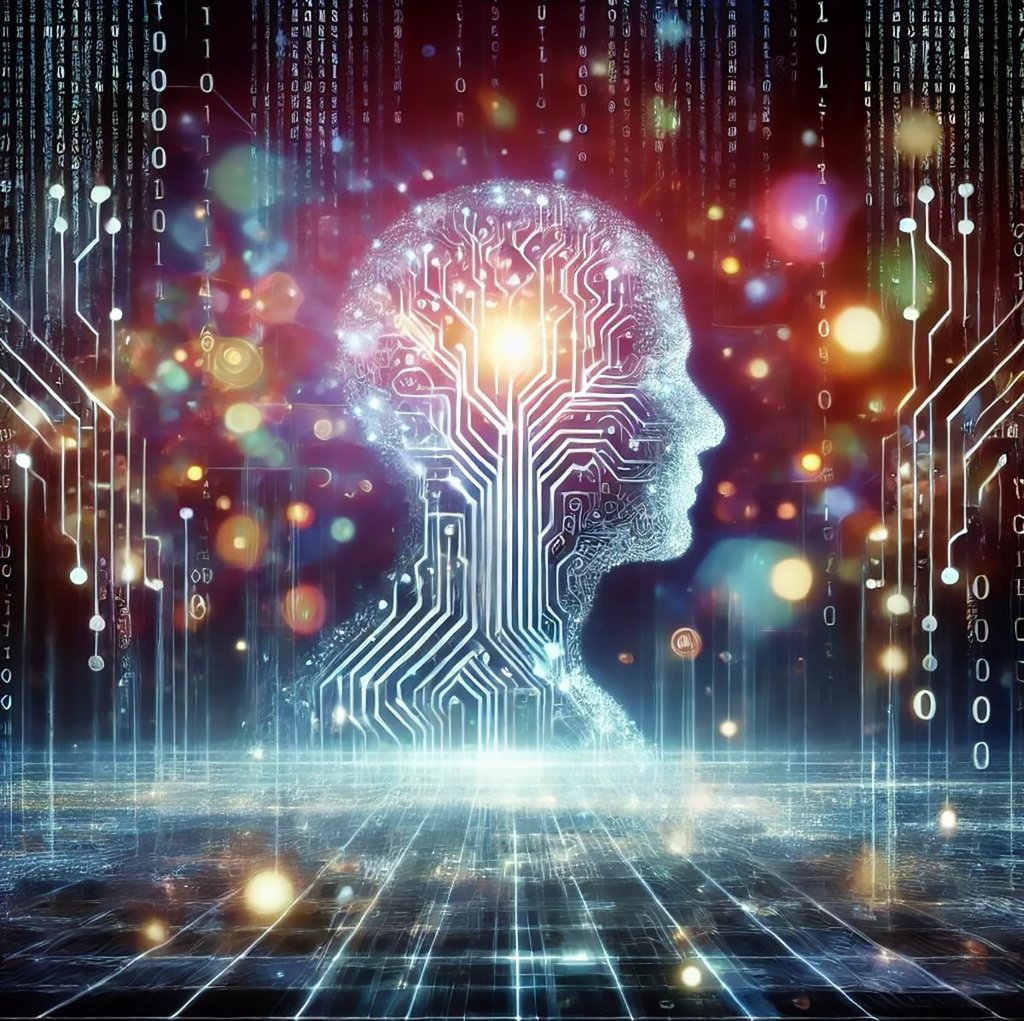The Evolution of Office Spaces in the Era of Advanced AI
Explore the transformative impact of advanced AI on the modern workplace in this in-depth article. From reimagined office layouts and hyper-personalized work experiences to seamless global collaboration and enhanced sustainability, discover how AI is reshaping every facet of office life. This blog delves into the challenges and opportunities of integrating AI, including automation's effects on jobs, ethical considerations, and the evolving role of leadership. Whether you're an employee, manager, or business owner, this article provides insights into the future of work and the steps organizations must take to thrive in an AI-driven world.
sensit.pro editorial team
12/24/20245 min read


The Evolution of Office Spaces in the Era of Advanced AI
In recent years, artificial intelligence (AI) has increasingly infiltrated every aspect of our lives, reshaping industries and transforming how we work. As AI becomes more sophisticated, its impact on the office environment is set to be profound, revolutionizing the tools we use and the way we conceptualize work itself. This blog explores the expected transformation of office environments under the influence of highly advanced AI.
Redefining Workspaces: From Fixed Desks to Fluid Hubs
The traditional office environment, characterized by cubicles and assigned desks, is rapidly becoming obsolete. Advanced AI technologies enable the transition from static workspaces to fluid, adaptive hubs designed for collaboration and creativity.
AI-Optimized Layouts: Smart algorithms analyze team dynamics, and project needs to recommend office layouts that maximize productivity. For instance, AI could suggest moving a marketing team closer to sales during a product launch to streamline communication.
Dynamic Environments: AI-controlled systems can adjust lighting, temperature, and noise levels in real time to suit individual or group preferences, enhancing comfort and focus.
Hot Desking with a Twist: Advanced AI ensures seamless hot desking by predicting which employees need specific resources (e.g., dual monitors or quiet zones) and allocating workstations accordingly.
This shift transforms offices into adaptive ecosystems, supporting diverse working styles and fostering collaboration.
AI as the Ultimate Assistant
Virtual assistants like Siri and Alexa have laid the groundwork. Still, the next generation of AI promises to act as hyper-intelligent office aides, capable of handling complex tasks and anticipating needs.
Meeting Coordination: AI can schedule meetings by analyzing participants' calendars, preferences, and time zones, ensuring minimal disruption and maximum attendance.
Document Management: Smart AI systems can draft, edit, and organize documents, reducing administrative burdens. They also flag inconsistencies and suggest improvements akin to a highly skilled editor.
Decision Support: By processing vast amounts of data, AI provides actionable insights to help managers make informed decisions. Predictive analytics could, for example, forecast project outcomes or identify potential risks.
Such tools empower employees to focus on high-value tasks, enhancing overall productivity.
The Rise of Personalized Work Experiences
In an AI-powered office, one size no longer fits all. Personalization is key to unlocking employee potential, and advanced AI makes this possible at scale.
Tailored Learning and Development: AI-driven platforms identify skill gaps and recommend personalized training programs. Employees receive real-time feedback and coaching tailored to their unique strengths and weaknesses.
Customized Workflows: AI adapts tools and processes to individual preferences. For instance, designers might have AI-powered software that intuitively adjusts to their style, while analysts get dashboards optimized for their workflow.
Health and Wellness Integration: Wearable devices connected to AI systems monitor stress levels, posture, and even hydration. These systems provide actionable advice to promote well-being, such as suggesting breaks or guiding desk setup adjustments.
This level of personalization creates a more engaging and supportive work environment, boosting morale and retention.
Collaboration Without Borders
Advanced AI is breaking down geographical and linguistic barriers, enabling seamless collaboration among global teams.
Real-Time Translation: AI-powered tools offer instant translations during meetings, ensuring clear communication across languages.
Virtual Reality (VR) and Augmented Reality (AR): AI-driven VR and AR platforms create immersive meeting experiences, making remote participants feel present in the room. Brainstorming sessions can take place in virtual environments, with AI capturing and categorizing ideas in real time.
Intelligent Collaboration Tools: Beyond video conferencing, AI-enhanced platforms like Microsoft Teams or Slack automatically summarize discussions, track action items, and monitor progress toward goals.
The ability to collaborate effortlessly across time zones and cultures enables organizations to leverage diverse perspectives and expertise.
Automation: A Double-Edged Sword
Automation, powered by advanced AI, is reshaping the nature of work. While it streamlines operations and boosts efficiency, it also raises critical questions about job displacement and the future role of humans in the workplace.
Enhanced Efficiency: AI automates repetitive tasks, from data entry to customer service, allowing employees to focus on strategic initiatives.
Augmentation, Not Replacement: Contrary to fears, AI often works alongside humans, augmenting capabilities rather than replacing jobs. For example, AI assists doctors in diagnosing diseases or marketers in analyzing consumer behavior.
Job Evolution: As AI takes over routine tasks, new roles emerge in areas like AI oversight, ethical compliance, and system customization. Employees are likely to transition into higher-value, creative, and relationship-focused positions.
Addressing the Skills Gap: Organizations must invest in upskilling programs to prepare their workforce for the AI-driven economy. Partnerships with educational institutions and online platforms will play a crucial role.
The rise of automation requires a delicate balance between leveraging technology and supporting human talent.
Enhanced Security and Ethical Considerations
As AI becomes integral to office operations, ensuring data security and ethical use is paramount.
AI-Driven Security: Advanced AI systems monitor networks for unusual activity, detecting and neutralizing threats in real-time. Biometric authentication, powered by AI, replaces traditional passwords, adding an extra layer of protection.
Privacy Concerns: While AI enables personalized experiences, it also collects vast amounts of data. Organizations must prioritize transparency and consent to maintain trust.
Bias and Fairness: AI algorithms must be designed and monitored to prevent biases that could lead to unfair hiring practices or workplace discrimination. Ethical AI frameworks will guide development and deployment.
Regulatory Compliance: Governments are introducing regulations to govern AI use in the workplace. Staying compliant will require organizations to adopt robust governance practices.
Navigating these challenges is crucial to building a secure and equitable AI-powered office.
The New Role of Leadership
The role of leaders is evolving in the AI-driven workplace. Managers must adapt to new dynamics and harness AI to foster innovation and engagement.
Data-Informed Decision-Making: Leaders leverage AI insights to make strategic decisions, from market trends to employee performance metrics.
Empathy and Adaptability: With AI handling routine management tasks, leaders can focus on developing interpersonal relationships and fostering a positive workplace culture.
Championing Change: Leaders must drive AI adoption by addressing employee concerns and highlighting benefits. Transparent communication and continuous learning are key.
Ethical Leadership: As stewards of AI implementation, leaders are responsible for ensuring ethical practices and promoting diversity and inclusion.
AI reshapes leadership into a more strategic, people-centric role.
Sustainability and Green Offices
AI is also helping offices become more sustainable, aligning with global efforts to combat climate change.
Energy Optimization: AI monitors and optimizes energy usage in real time, reducing carbon footprints. Smart lighting and HVAC systems adjust based on occupancy and weather conditions.
Sustainable Practices: AI platforms recommend eco-friendly suppliers, track waste reduction initiatives, and measure sustainability metrics.
Remote Work Enablement: AI tools facilitate remote work, reducing the need for physical office space and cutting down commuting emissions.
These innovations position AI-powered offices as leaders in environmental responsibility.
Conclusion: A Paradigm Shift
The integration of advanced AI into office environments represents a seismic shift in how we work. From redefining workspaces and fostering collaboration to enhancing security and sustainability, AI’s influence is profound and far-reaching. However, these advancements come with challenges, including ethical considerations and the need for upskilling.
Ultimately, the success of AI in transforming the office depends on striking a balance between technological innovation and human-centric practices. Organizations that embrace this transformation with foresight and flexibility will thrive in the era of advanced AI, paving the way for a smarter, more inclusive, and sustainable future of work.
